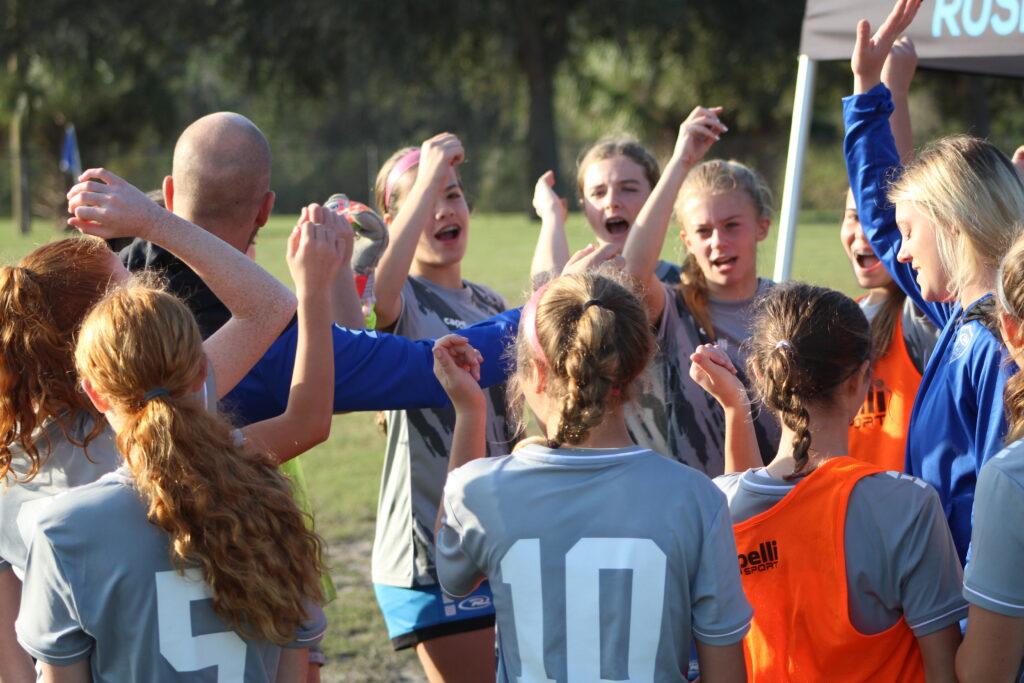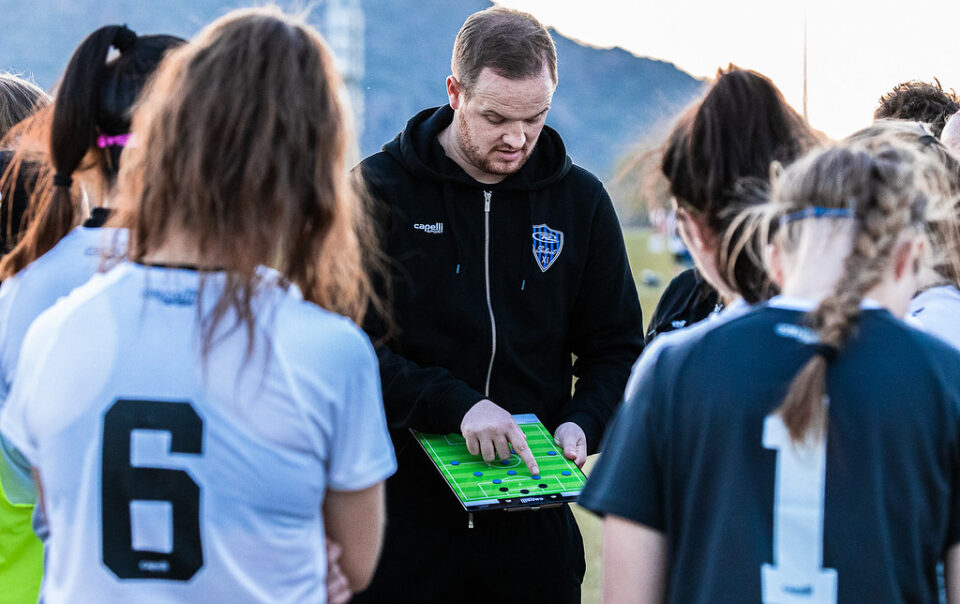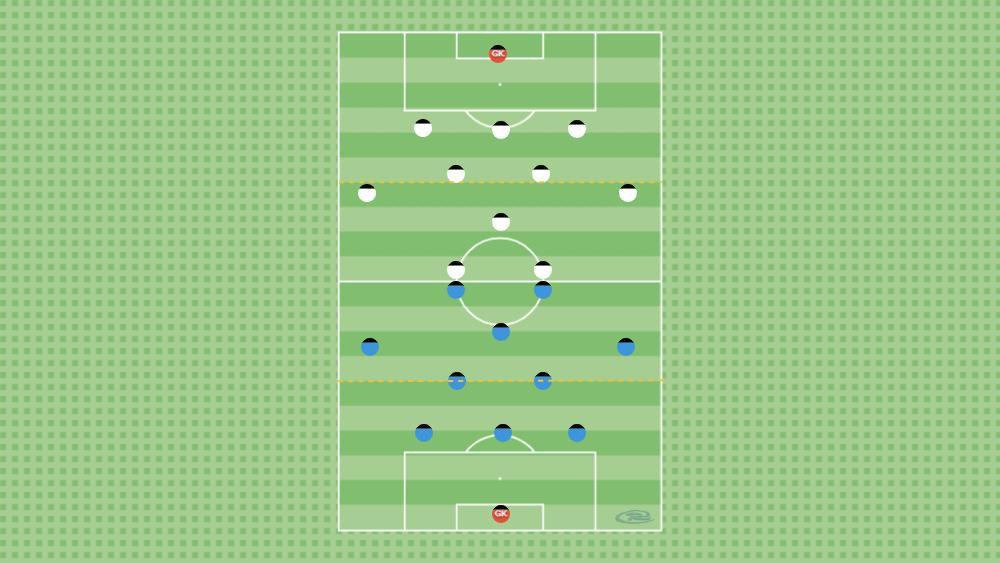Reaching the final moments of a match can be a team’s relief… or its worst nightmare. Whether winning or losing by a goal, there are aspects of the game that are essential to face the last minutes and succeed.
Como ya sabes, parte del Currículum de Rush es entrenar a los jugadores para que sepan adoptar diferentes comportamientos when the game is coming to its end and the team is up a goal or down a goal.

The Rush Way considera una virtud de sus jugadores el reconocer y usar los 'humores del juego' en beneficio del equipo. Adaptar nuestro juego al resultado actual para maximizar nuestras chances para remontar (cuando estamos perdiendo) o impedir al oponente entrar en ritmo (al ir ganando) es una habilidad que puede ser aprendida.
Encuentra la ‘Up A Goal, Down A Goal’ Guide con puntos a entrenar en The Rush Coaching Manual, donde también podrás chequear la siguiente actividad, with specific tactics and strategies that your team can apply when either up or down a goal and reaching the final 10 minutes of the game:
ORGANIZACIÓN Y DESCRIPCIÓN
First segment is open 11v11 game, at 10 min. Team A is down a goal to Team B. The next 10 min. constitute the end of a game. After 10 min. teams reverse roles. These 10 min. also constitute the end of a game. Coach over play and stop if necessary. After those initial 20 minutes, make a water break and discuss.
The following two 10 minute halves mimic the same of the first stage, with Team A starting down a goal, and then in the second half up a goal, but now the coach is on sidelines and there’s limited coaching. Add referee if possible. After this 20 minutes, we make another short water break and we discuss with the teams.
Los últimos 20 minutos de la sesión son jugados normalmente, con un árbitro. Las indicaciones son puramente durante el juego y limitadas. Mientras los equipos anotan y pasa el tiempo, alienta a los jugadores a reajustarse como equipo dependiendo de la situación.

QUÉ HACER SI ESTAMOS UN GOL ARRIBA
Consejo #1: Siempre mantener una superioridad numérica de +1 en el fondo. Esto no quiere decir necesariamente defender al lado de nuestro arquero, pero sí asegurar que tenemos más jugadores que el oponente en zonas peligrosas.
Consejo #2: Es un concepto obvio, pero busquemos mantener la posesión, preferentemente en el campo rival.
Consejo #3: If you lose the ball far from your goal, try to kill the counter right away. If the counterpress works, that’s great. If it doesn’t, consider a tactical foul.
QUE NO HACER AL ESTAR UN GOL ARRIBA
Consejo #1: Rushing set pieces, such as throw ins, corners, goal kicks, free kicks, etc, will allow the rival getting in a direct, fast rhythm that may decide the match. When killing the game, you need an organized defense, that prevents quick kicks, and protects dangerous spaces. Safety first.

QUÉ HACER AL ESTAR UN GOL ABAJO
Consejo #1: La mentalidad es clave, es imperativo que se mantengan concentrados. El rival hará todo lo que esté a su alcance para cortar nuestro ritmo. Mantén la cabeza en el juego. Todo lo que puedes hacer es controlar lo controlable: a ti mismo.
Consejo #2: Ajustar el sistema, pero con cuidado: No se busca quedar en inferioridad numérica para los contragolpes del rival. Hay que considerar el riesgo de modificar la superioridad en el fondo para quedar ‘mano a mano’.
Consejo #3: Utilizar la trampa del offside. NO subestimar este ítem, los atacantes no siempre están tan atentos como crees. Esto puede ser la solución. El portero se transforma en un defensor central.
QUE NO HACER AL ESTAR UN GOL ABAJO
Consejo #1: Primero, la desesperación no llevará a nada bueno. Hay que estar concentrados en la misión: anotar, eso es lo que importa.
Consejo #2: Your team will take some extra risks like we mentioned above, but careful, you don’t want the search of a goal into securing your team’s defeat.










